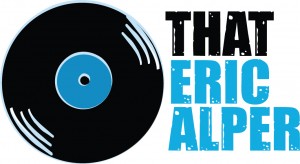Before The Joshua Tree, U2 was a great band. After it, they were icons. The 1987 album turned them into global superstars, propelled by anthems like With or Without You, I Still Haven’t Found What I’m Looking For, and Where the Streets Have No Name. But beyond the Grammy wins, multi-platinum status, and timeless hits, The Joshua Tree is an album with a history as vast as the desert it pays tribute to. Here are five fascinating facts you may not know about this legendary record.
1. The Song That Almost Got Erased
Every band has that song—the one that takes forever to get right. For U2, it was Where the Streets Have No Name. The track’s complex time signature shifts made it a nightmare to record, with producers spending weeks trying to nail the right take. Frustrated, Brian Eno actually attempted to erase the song’s tapes, believing it would be easier to start from scratch than to keep fixing a mess. An engineer physically stopped him, and U2 went on to create one of the most transcendent album openers of all time.
2. The Influence of American Literature and Politics
Bono wasn’t just inspired by rock and roll—he was devouring American literature in the mid-1980s. Works by Norman Mailer, Flannery O’Connor, and Raymond Carver deeply influenced The Joshua Tree’s lyrics, shaping its themes of moral decay, political turmoil, and spiritual searching. Bono’s humanitarian visits to Central America during the recording sessions also played a crucial role, inspiring Bullet the Blue Sky and Mothers of the Disappeared, both of which critique U.S. foreign policy in El Salvador and Nicaragua.
3. The Accidental Album Cover That Became Iconic
You can’t talk about The Joshua Tree without mentioning its evocative cover art. While traveling through the Mojave Desert, photographer Anton Corbijn stumbled upon a lone Joshua tree near Darwin, California. The band, captivated by its stark beauty and biblical symbolism, took several photos with the tree—and suddenly, the album had its title. Today, U2 fans still make pilgrimages to the site, even though the actual tree fell over in 2000.
4. The Song U2 Almost Regretted Leaving Off
If you’ve ever wondered why The Sweetest Thing wasn’t on The Joshua Tree, you’re not alone. The song was written by Bono as an apology to his wife, Ali, for missing her birthday due to studio sessions. While it was released as a B-side, the band later admitted they regretted not including it on the album. The song became a hit in 1998 when U2 re-recorded it for their Best of 1980-1990 compilation, proving it had the staying power of any Joshua Tree-era classic.
5. The Album Was Almost a Double LP
U2 recorded around 30 songs during The Joshua Tree sessions, enough for a double album. Bono wanted to release a two-part record—one side focusing on roots-inspired music and another exploring ambient, experimental sounds. Producer Daniel Lanois and Brian Eno convinced the band to trim the tracklist to 11 songs, but the leftover material later surfaced on Rattle and Hum and The Joshua Tree’s 20th-anniversary reissue, giving fans a glimpse of what could have been.
The Joshua Tree redefined U2 – and rock music. From its spiritual themes to its panoramic soundscapes, it’s the sound of a band pushing beyond their limits, capturing the grandeur and contradictions of America, and delivering an album that still echoes across stadiums, deserts, and road trips decades later. Some records are just albums. The Joshua Tree is a journey.







